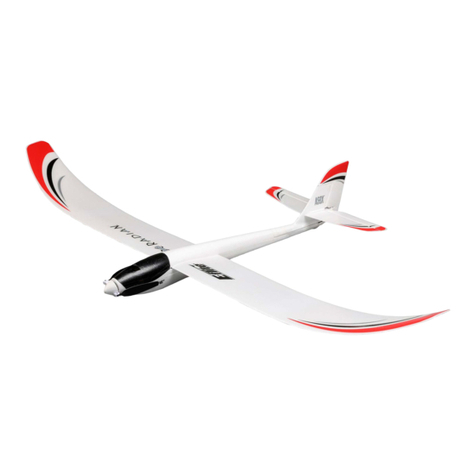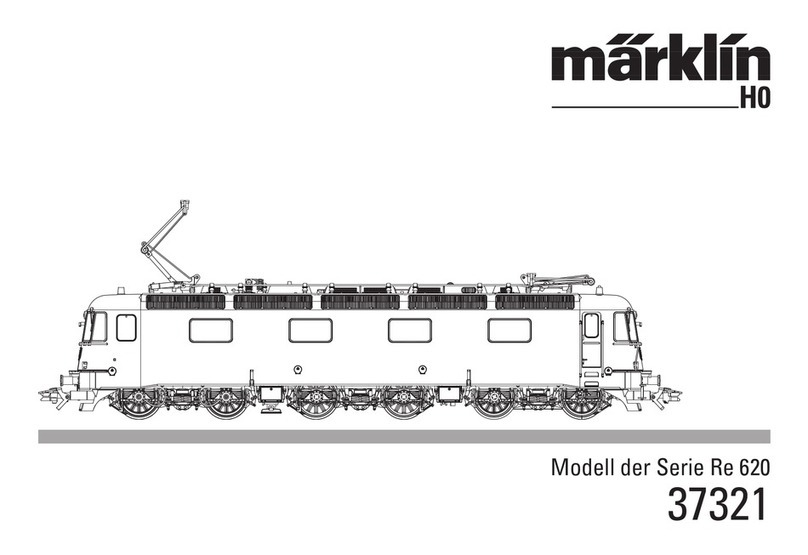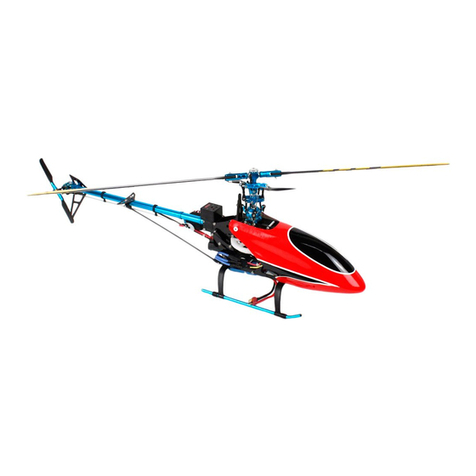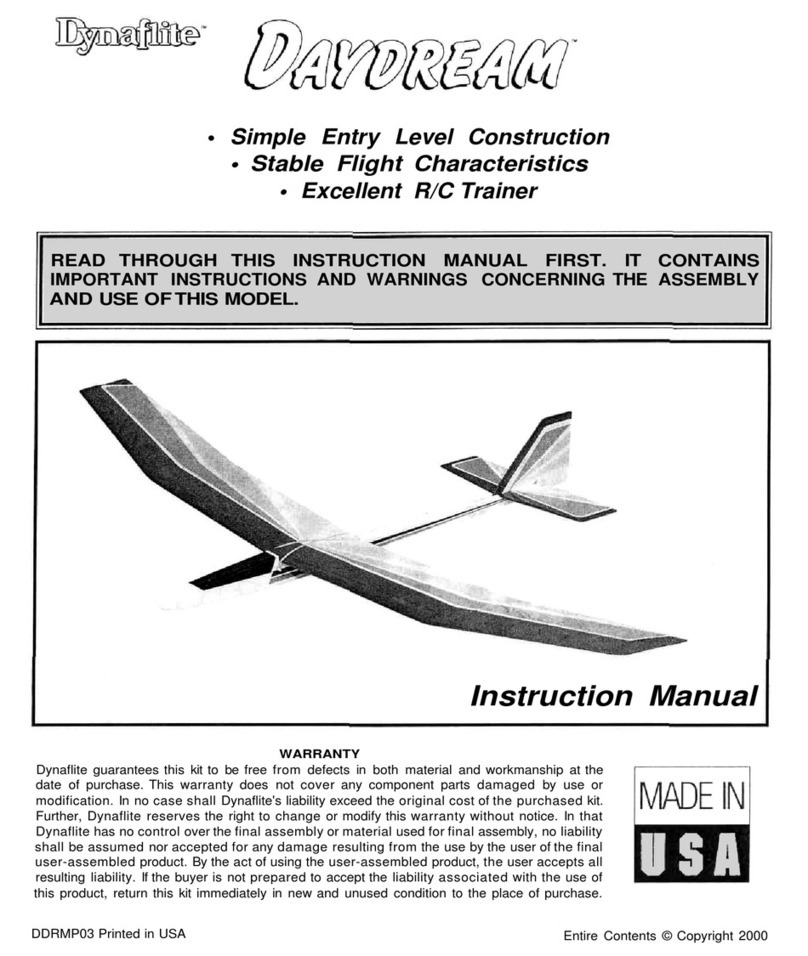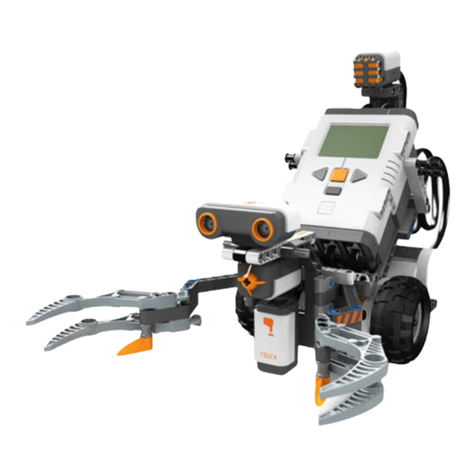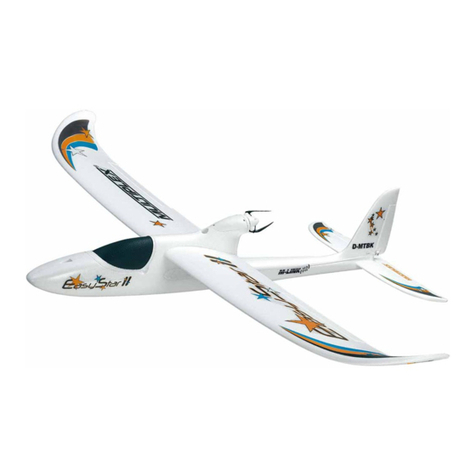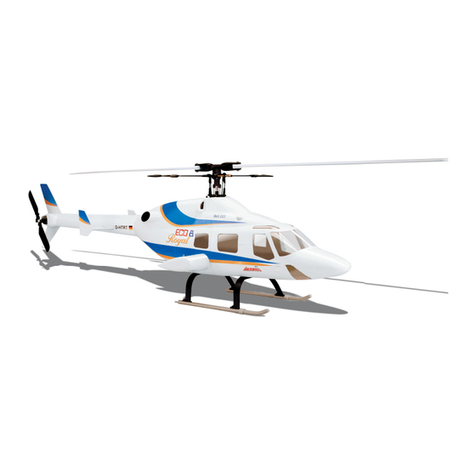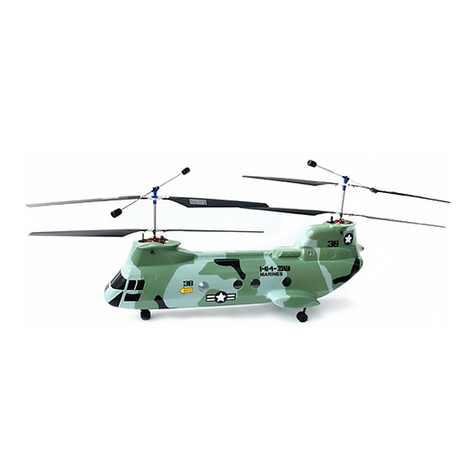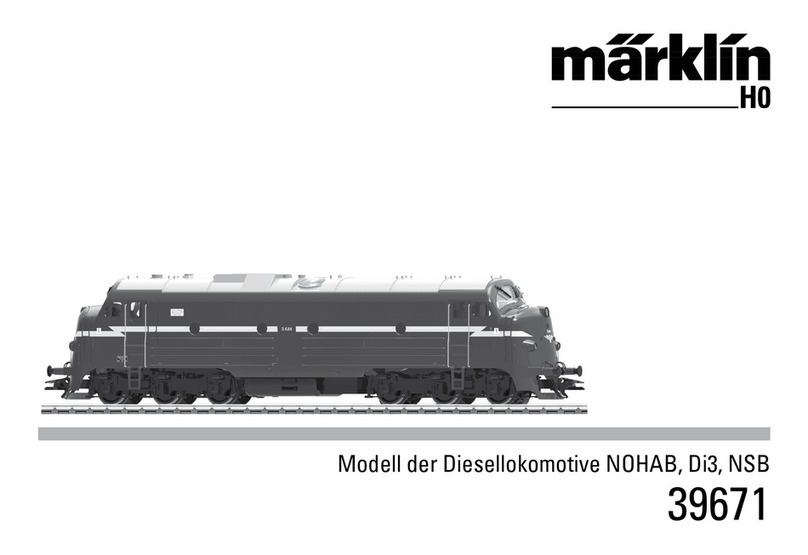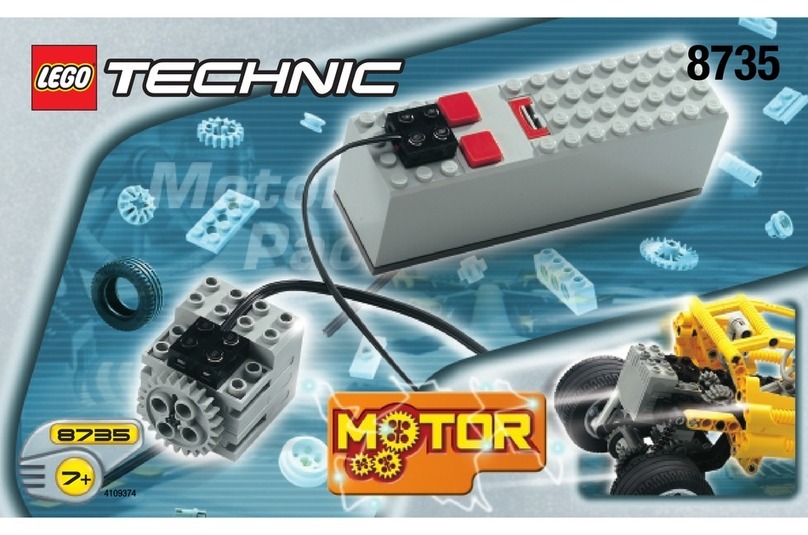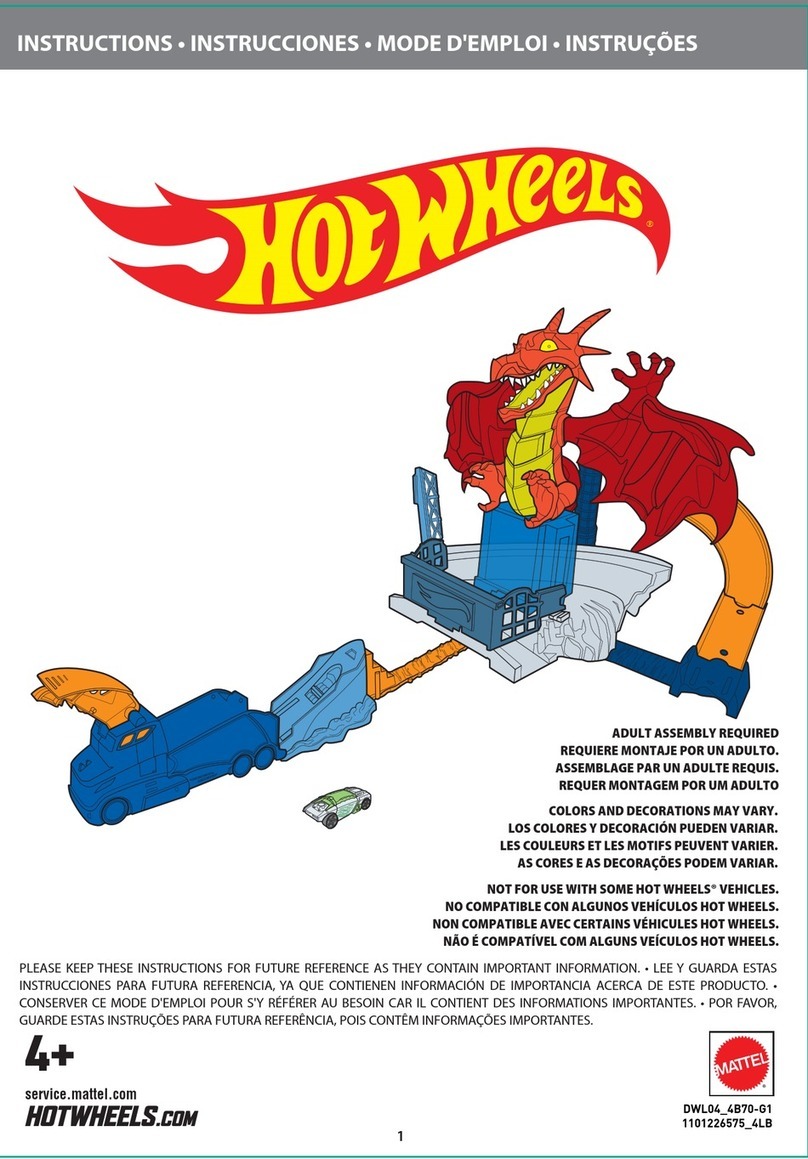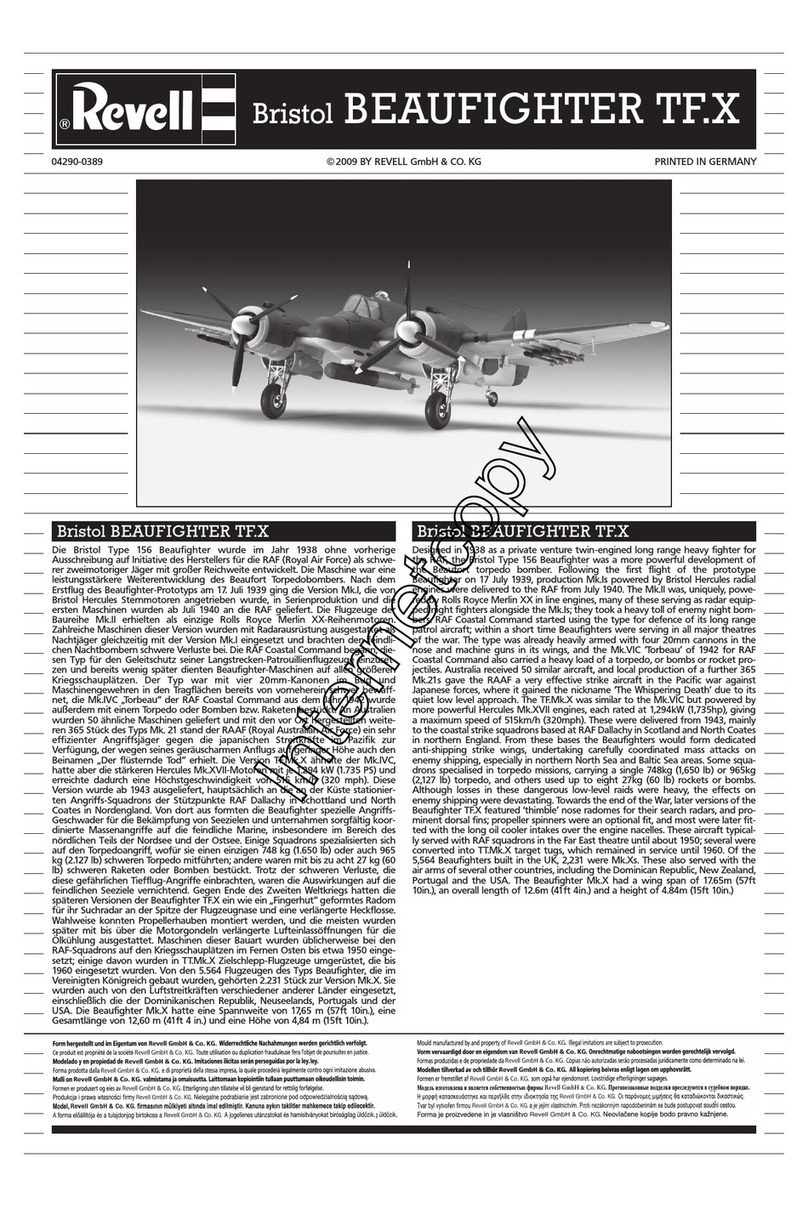
®
4
Charging Warnings
CAUTION: All instructions and warnings must be followed exactly.
Mishandling of Li-Po batteries can result in a fire, personal injury, and/
or property damage.
• NEVER LEAVE CHARGING BATTERIES UNATTENDED.
• NEVER CHARGE BATTERIES OVERNIGHT.
• By handling, charging or using the included Li-Po battery, you assume all
risks associated with lithium batteries.
• If at any time the battery begins to balloon or swell, discontinue use
immediately. If charging or discharging, discontinue and disconnect.
Continuing to use, charge or discharge a battery that is ballooning or
swelling can result in fire.
• Always store the battery at room temperature in a dry area for best results.
• Always transport or temporarily store the battery in a temperature range
of 40–120º F (5–49º C). Do not store battery or aircraft in a car or direct
sunlight. If stored in a hot car, the battery can be damaged or even catch fire.
• Always charge batteries away from flammable materials.
• Always inspect the battery before charging and never charge dead or
damaged batteries.
• Always disconnect the battery after charging, and let the charger cool
between charges.
• Always constantly monitor the temperature of the battery pack while charging.
• ONLY USE A CHARGER SPECIFICALLY DESIGNED TO CHARGE LI-PO
BATTERIES. Failure to charge the battery with a compatible charger may
cause fire resulting in personal injury and/or property damage.
• Never discharge Li-Po cells to below 3V under load.
• Never cover warning labels with hook and loop strips.
• Never charge batteries outside recommended levels.
• Never attempt to dismantle or alter the charger.
• Never allow minors under the age of 14 to charge battery packs.
• Never charge batteries in extremely hot or cold places (recommended
between 40–120° F or 5–49° C) or place in direct sunlight.
A
B
Charge the Flight Battery
The recommended battery for the aircraft, included with the RTF version, is an
11.1V, 1300mAh 3S 30C Smart Technology LiPo battery with an IC3®connector
(SPMX22003S30). If using a different battery, the battery should be of similar
capacity, dimensions and weight to fit in the fuselage. The aircraft electronic
speed control is equipped with an IC3 device connector. Ensure the battery
chosen is compatible. Always ensure the model balances at the recommended
center of gravity (CG) with the chosen battery. Follow your chosen battery and
battery charger instructions to charge the flight battery.
RTF Smart Technology Battery and S120 Charger,
Specifications and Operation
The Spektrum S120 Smart Technology battery charger included with the RTF
version of the aircraft is compatible only with Spektrum Smart 2-3 cell LiPo
batteries or 6-7 cell NiMH batteries. It is not compaptible with any other battery
chemistries or non-Smart batteries.
A USB power supply is required for use. A USB-C QC type power supply is
recommended for the fastest charge times.
To charge the included flight battery:
1. Using the supplied Type-C USB cable, connect the S120 charger to a USB
power supply (not included ).
2. Insert the Spektrum Smart
Battery IC3 connector
(A) into the charger
IC3 port, and insert the
battery balance lead (B)
into the charger balance
port. Both the IC3 and
balance connectors must
be connected for the
charging process to begin.
The battery may be disconnected from the charger at any time
to stop the charging process.
3. Disconnect the IC3 and balance connectors when the charge and balance
cycles are complete, as indicated by the LED.
4. The LED indicator will glow solid red to indicate a charging error. Follow
the operation steps to ensure proper connection is used to charge the
battery.
Refer to the LED indicator table for charger status.
IMPORTANT: Connecting a non-Smart battery will cause a charge error and the
S120 will not recognize or charge the battery.
S120 Specifications
Input USB Type C, power supply not included
Input Voltage 5V-12V
Charge Power 18W max (dependant on power supply)
Compatible USB Power Adaptor 5V/1A, 5V/2A, USB Quick Charge (QC) 2.0/3.0
Battery Connector IC3®and balance connector
Battery Types LiPo, NiMH (Spektrum Smart Batteries only )
Cell Count 2-3 cell LiPo, 6-7 cell NiMH
Max Output Voltage 13.05V
Max Output Current Up to 2A
LED Indicator
Power On USB 5V: White LED
USB Quick Charge 2.0/3.0: Blue LED
LiPo: Purple LED
NiMH: Yellow LED
Battery Capacity
Less Than 25% Single Flash
25% – 75% Double Flash
76% – 99% Triple Flash
Charge Complete Green LED (Solid)
Error Red LED (Solid)
USB-C port LED Indicator
Balance Port
IC3 Charge Port
